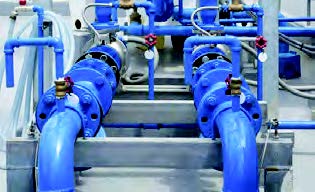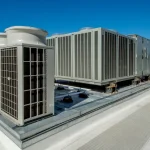How to Unlock Immediate Cost Savings with Smart Integration of HVAC Technology
Your building’s heating, ventilation, and air conditioning (HVAC) system is more central to your facility than you realize, creating the comfortable climate that keeps your customers satisfied, employees productive, and sensitive equipment protected.
However, for many facility managers, it can also be a source of unpredictable costs and inconsistent performance that can disrupt daily operations and impact their bottom line.
This can be especially true in older buildings with outdated equipment. An aged or inefficient system can silently drain your budget through high energy consumption, while the looming threat of an outage can jeopardize production and operations.
The good news?
You don’t have to buy a new building or invest in a new HVAC unit to improve performance. You can make your existing infrastructure smarter, more responsive, and more efficient right now for a fraction of the cost.
What is Smart HVAC Integration?
Smart technologies are a broad category of technology that includes systems or devices that utilize connectivity, sensors, and data processing to make decisions, automate tasks, and adapt to their environment with minimal human intervention.
It’s an incredibly popular market, valued at nearly $50 billion in 2022, and it’s growing quickly, projected to triple by 2030 with an annual growth rate of 15 percent!
In the HVAC context, smart technology encompasses everything from smart thermostats to sensors equipped with AI-powered data processing capabilities. Smart integration refers to the seamless connection of your HVAC and environmental control systems with modern building automation technology.
Smart systems analyze usage patterns, occupancy levels, and weather forecasts to fine-tune their performance automatically.
They also make responding to problems a proactive, rather than a reactive, practice.
By leveraging Internet of Things (IoT) sensors, analytical tools, and even AI, we can see the complete picture of your facility’s operational needs.
As a result, we can quickly diagnose often-unseen or easily-overlooked underlying issues, including problems caused by aging components or inefficient use.
Benefits You Can Feel
Integrating your HVAC and building controls delivers powerful, measurable results that impact your bottom line and improve your facility’s performance. The primary benefits include:
Less Downtime and Fewer Outages
By identifying potential component failures and operational conflicts early, smart systems help prevent unexpected breakdowns that disrupt your business.
Significant Energy Savings
An optimized system doesn’t work harder than necessary, leading to a simple equation: less energy consumption equals lower energy costs.
This is excellent news for your budget. Energy costs continue to go up, and HVAC costs are among the highest expenses associated with residential and commercial buildings.
What’s more, these systems age a little bit every year, making them slightly less efficient and more expensive to run. Smart HVAC will help reverse this trend, optimizing existing systems to run as efficiently as possible.
Even marginal improvements can lead to meaningful energy and cost savings.
According to Energy Star, just installing a smart thermostat will save approximately eight percent on heating and cooling bills.
Lower Greenhouse Gas Emissions
Smart HVAC units operate more efficiently, which directly translates to a smaller carbon footprint.
For instance, integrating occupancy sensors will make HVAC units more efficient by detecting activity (or a lack thereof) in particular areas and adjusting HVAC settings accordingly, so energy is only consumed when needed.
By moving conditioned air only where it’s needed, smart HVAC units reduce energy waste and contribute to a more sustainable building operation.
Longer Equipment Lifespans
HVAC systems are a significant investment, and making them last as long as possible is in everyone’s best interest.
Smart controls reduce unnecessary wear and tear from issues like short cycling, where a unit turns on and off too frequently. This helps you get the most out of your existing equipment, extending its life and delaying costly replacements.
Modernization Made Simple
Modernizing your HVAC system doesn’t have to mean making a significant investment in new equipment.
Smart HVAC integration provides a straightforward, powerful, and accessible path to a more reliable and cost-effective facility today.
Successfully implementing this technology requires a partner with expertise in both HVAC mechanics and modern automation.
That’s where we come in!
At Thermal Concepts, we help our clients future-proof their buildings by moving beyond the simple thermostat and embracing the power of smart integration.
Take control of your indoor climate and energy usage with state-of-the-art HVAC automation solutions. Contact Thermal Concepts today to upgrade your system and experience smarter, more efficient building management!




